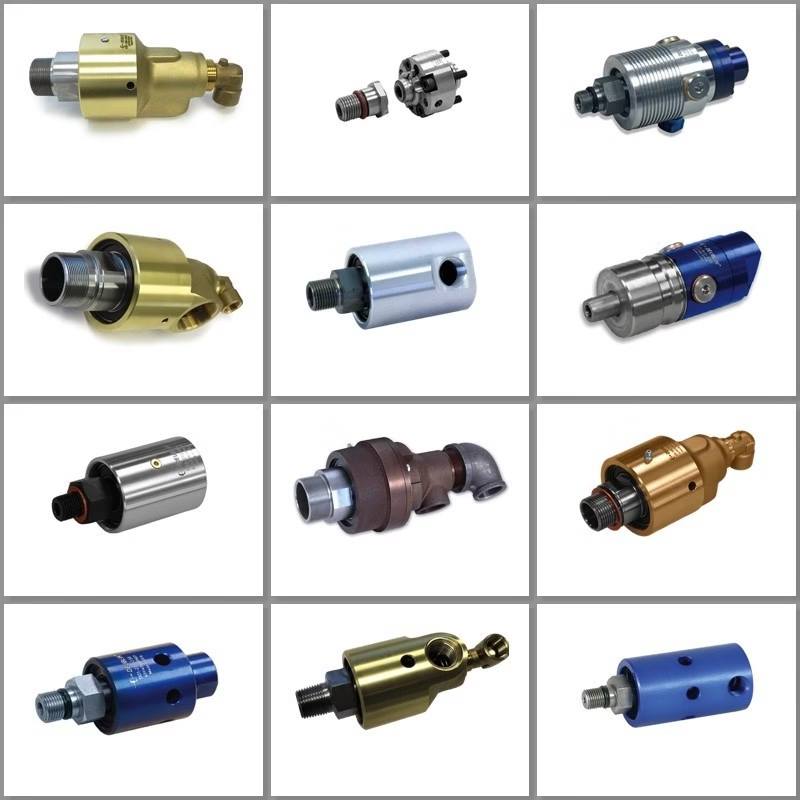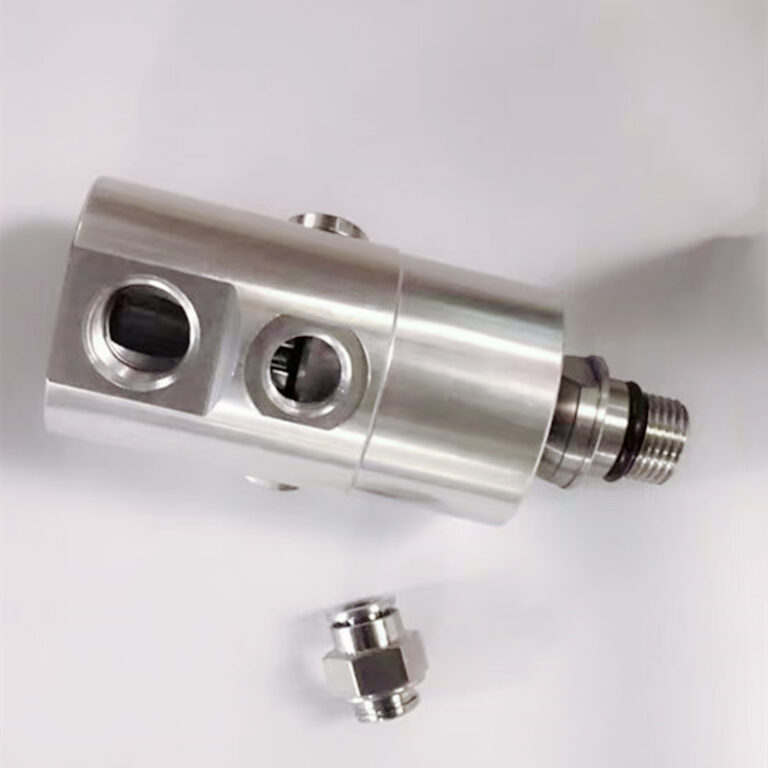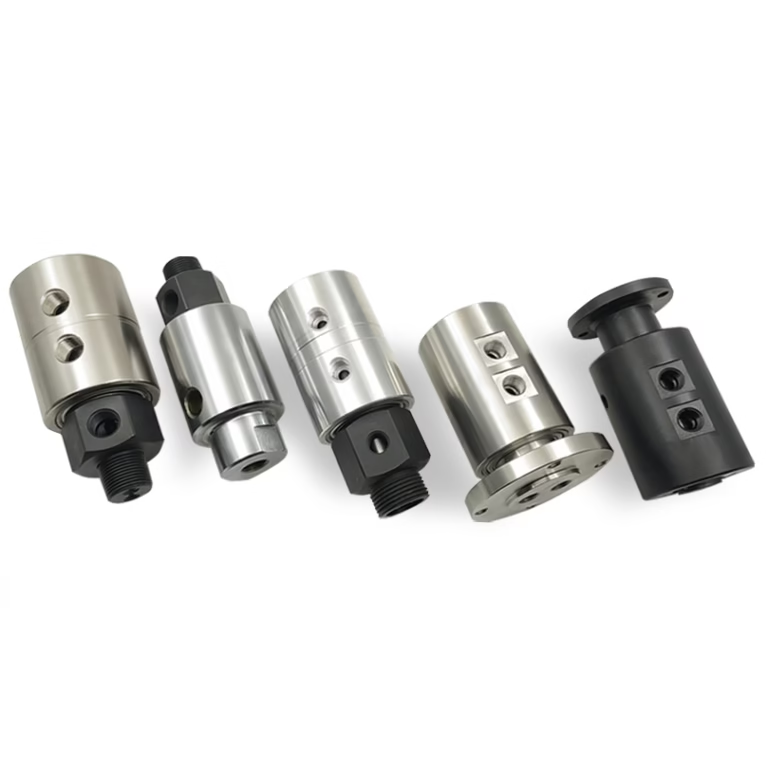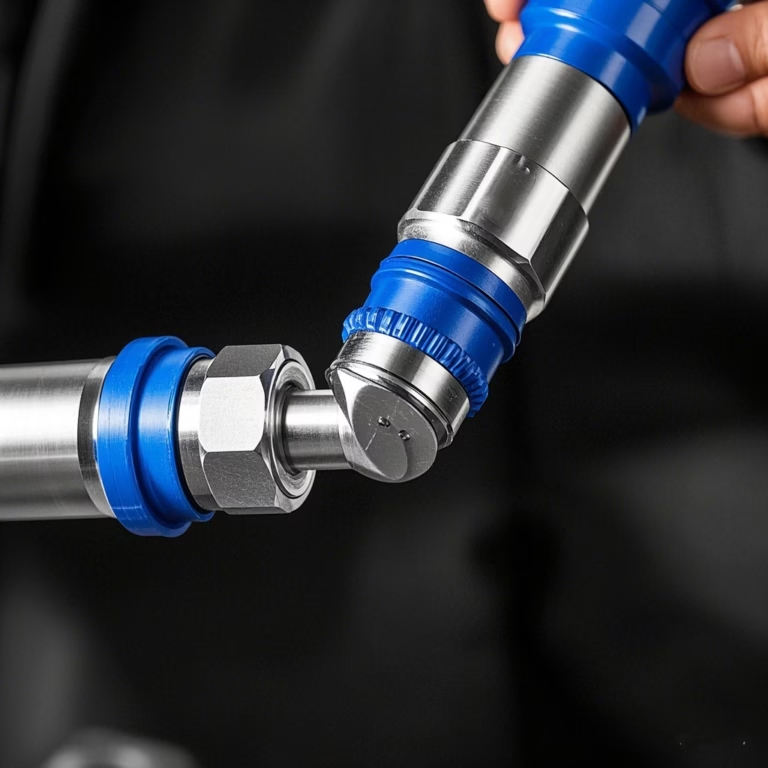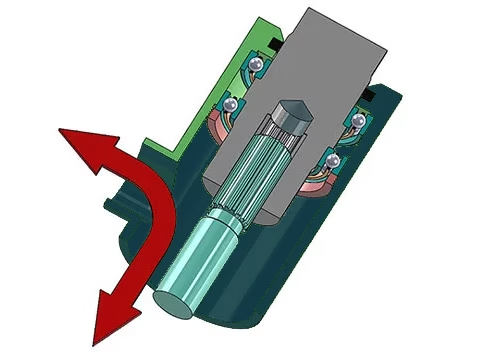Rotary Valve or Rotary Joint? A Complete Comparative Guide
In industrial systems, components such as rotary valve and rotary joint is crucial for controlling the flow of air, gas, steam, oil, and other media. However, these two components are often confused due to their similar rotational function. This article provides a comprehensive comparison of rotary valves and rotary joints, focusing on their structure, working principles, applications, and selection criteria. If you’re an engineer or procurement officer trying to decide between the two, this guide is for you.
Definitions and Basic Concepts
Rotary Valve
A rotary valve is a mechanical device primarily designed to control the flow of materials, including dry bulk solids, powders, granules, or even some types of viscous fluids. Its core function is to meter, regulate, or completely stop the flow of these substances as they move through a pipeline or process system. Rotary valves operate based on the rotation of an internal rotor within a housing.
The rotor of a rotary valve typically has multiple compartments or pockets. As the rotor spins, these compartments pick up material from the inlet side and transport it to the outlet side. By controlling the speed of rotation and the size of the compartments, operators can precisely control the amount of material that passes through the valve. This makes rotary valves highly useful in applications where accurate material handling and flow control are crucial, such as in the food processing, pharmaceutical, and chemical industries.
Rotary Joint
A rotary joint, on the other hand, is a specialized mechanical component designed to facilitate the transfer of fluids (liquids, gases, or steam) between a stationary source and a rotating part of a machine or system. Its main objective is to maintain a continuous, leak-proof connection while allowing the connected equipment to rotate freely. Industrial applications such as manufacturing machinery, printing presses, and automotive equipment rely on rotary joints for essential rotational movement. These applications use rotary joints to enable and facilitate the necessary rotational motion.
Rotary joints work by separating the stationary and rotating elements of a fluid transfer system. The stationary housing of the rotary joint connects to the fluid source, while the rotating part, usually a rotor, links to the moving equipment. Seals within the joint prevent fluid leakage, and bearings support the rotation, ensuring smooth and efficient operation. This enables the seamless transfer of fluids even as the machinery rotates at high speeds or under varying conditions.
Components and Structures
Rotary Valve
Housing:
The housing of a rotary valve serves as the outer shell, providing structural support and containing the internal components. Manufacturers usually make it from durable materials such as cast iron, stainless steel, or aluminum, depending on the application requirements. For example, in food processing applications where hygiene is critical, engineers prefer stainless-steel housings to prevent contamination. The housing includes an inlet and an outlet port, which connect to the upstream and downstream sections of the pipeline or process system.
Rotor:
The rotor is the heart of the rotary valve. It is designed with a series of compartments or vanes that create pockets for holding the material. Manufacturers machine the rotor from wear-resistant materials to withstand the abrasion caused by the flowing material. The shape and size of the rotor compartments determine the valve’s capacity and flow-control characteristics. As the rotor rotates, it intermittently isolates the inlet from the outlet, allowing for controlled material transfer.
Seals:
Seals in a rotary valve are crucial for preventing material leakage between the rotor and the housing. Common types of seals include lip seals, wiper seals, and mechanical face seals. Lip seals create a tight seal against the rotor’s outer surface to retain lubricants and block contaminants. Wiper seals remove any material that accumulates on the rotor, ensuring smooth operation. Mechanical face seals offer a more robust sealing solution, particularly in high-pressure or high-temperature environments.
Drive Mechanism:
A drive mechanism rotates the rotor. Depending on the application’s needs, an electric motor, a pneumatic actuator, or a hydraulic motor performs this function. The drive mechanism connects to the rotor through a shaft and a coupling. In some cases, operators use a speed-control device, such as a variable-frequency drive for electric motors, to adjust the rotor’s rotational speed and thus control the material flow rate.
Rotary Joint
Housing:
Similar to the rotary valve, the housing of a rotary joint is the stationary outer part. It is constructed from materials like stainless steel, carbon steel, or brass, chosen based on factors such as the fluid type, operating pressure, and temperature. The housing has ports for fluid inlet and outlet, which connect to the stationary piping system. It also provides support and protection for the internal components, such as the seals and bearings.
Rotor:
The rotor in a rotary joint is the rotating component that connects to the moving equipment. It is designed to rotate smoothly within the housing while maintaining a tight seal. Manufacturers machine the rotor from strong and durable materials to withstand the mechanical stresses and friction associated with rotation. The rotor has internal channels or bores that form the pathways for the fluid to flow from the inlet to the outlet as it rotates.
Seals:
Seals are among the most critical components of a rotary joint. They prevent fluid leakage between the stationary housing and the rotating rotor. Various types of seals include mechanical seals, lip seals, and O-rings. Mechanical seals, which consist of two mating surfaces (one stationary and one rotating), perform well in high-pressure and high-temperature applications because they provide excellent sealing performance. Engineers often use lip seals and O-rings in combination with mechanical seals or in lower-pressure applications to provide additional sealing and protection.
Bearings:
Bearings support the rotation of the rotor within the housing, reducing friction and wear. Different types of bearings, such as ball bearings, roller bearings, and sleeve bearings, can be used depending on the application. Ball bearings are popular in many rotary joints because of their low friction and ability to handle high-speed rotations. Roller bearings are suitable for applications that require high load-carrying capacity, while sleeve bearings are simple and cost-effective, often used in applications where precision requirements are not extremely high.
Functions
Rotary Valve
Material Flow Control:
The primary function of a rotary valve is to control the flow of materials. It allows operators to start, stop, or regulate the flow rate of dry bulk solids or other substances. For example, in a cement production plant, a rotary valve can control the flow of cement powder from a storage silo to a conveyor belt, ensuring a consistent supply for further processing.
Isolation:
Rotary valves can also be used to isolate different parts of a process system. By closing the valve, operators can prevent material from flowing between two sections, which is useful during maintenance, cleaning, or when there is a need to shut down a particular part of the process without affecting the rest of the system.
Airlock Function:
In some applications, rotary valves serve as airlocks. They prevent the escape of air or gas from a pressurized system while allowing the material to pass through. This is common in pneumatic conveying systems, where maintaining the pressure differential is crucial for efficient material transport.
Rotary Joint
Fluid Transfer:
The main function of a rotary joint is to transfer fluids between stationary and rotating components. It enables the continuous flow of liquids, gases, or steam, ensuring that the rotating machinery receives the necessary fluid power or coolant. For instance, in a hydraulic-powered rotary table used in manufacturing, a rotary joint transfers hydraulic fluid to the table, allowing it to rotate smoothly and perform its operations.
Sealing:
Rotary joints are designed to provide a leak-proof seal to prevent fluid loss. A leak in a rotary joint can lead to reduced system efficiency, fluid wastage, and, in some cases, safety hazards. Therefore, maintaining a tight seal is essential for the proper functioning of the joint and the overall system.
Accommodating Rotation:
These joints are engineered to accommodate the rotational movement of the connected equipment. They can withstand high speeds, vibrations, and mechanical stresses without compromising the fluid transfer or the seal integrity. This makes them suitable for a wide range of applications where rotating machinery is involved.
Types
Rotary Valve
Lobe-Type Rotary Valves:
Lobe-type rotary valves have rotors with two or more lobes. As the rotor rotates, the lobes create compartments that carry the material from the inlet to the outlet. These valves are suitable for handling a variety of materials, including powders, granules, and small pellets. They offer good flow control and are often used in applications where a relatively high-volume flow is required.
Vane-Type Rotary Valves:
Vane-type rotary valves feature rotors with radial vanes. The vanes create pockets that pick up and transport the material. Users recognize these valves for their precise metering capabilities and commonly use them in applications that require accurate material feeding, such as in the pharmaceutical and food industries.
Multi-Port Rotary Valves:
Multi-port rotary valves have additional ports, allowing for more complex material flow patterns. They can be used to divert the material to different outlets or to mix materials from multiple inlets. These valves are often used in process systems where flexibility in material handling is required.
Rotary Joint
Single-Passage Rotary Joints:
Single-passage rotary joints are the simplest type. They allow for the transfer of a single fluid in one direction. These joints feature a single inlet and a single outlet port, which makes them suitable for applications that transfer only one type of fluid, such as supplying cooling water to a rotating drum.
Multi-Passage Rotary Joints:
Multi-passage rotary joints are designed to handle the transfer of multiple fluids simultaneously. They have multiple inlet and outlet ports, each dedicated to a different fluid. These joints feature a single inlet and a single outlet port, which makes them suitable for applications that transfer only one type of fluid, such as supplying cooling water to a rotating drum.
High-pressure Rotary Joints:
High-pressure rotary joints are engineered to withstand pressures significantly higher than normal operating levels. They are used in applications such as hydraulic presses, high-pressure water jetting systems, and oil and gas exploration equipment. These joints feature stronger materials, thicker walls, and more robust seals to ensure integrity under high-pressure conditions.
High-Speed Rotary Joints:
High-speed rotary joints are designed to operate at high rotational speeds, typically more than 10,000 RPM. This characteristic makes them ideal for complex systems where operators transfer different fluids, such as hydraulic oil, coolant, and lubricant, to a rotating component. These joints require low-friction bearings and high-performance seals to prevent excessive wear and leakage at high speeds.
Applications
Rotary Valve
Food Processing:
In food processing, rotary valves handle ingredients like flour, sugar, and grains. They control dosing and flow during mixing, blending, and packaging. For instance, in a bakery, they regulate the flow of flour from bins to mixers for consistent quality.
Pharmaceutical:
In pharma, rotary valves are vital for handling powders, granules, and tablets. Used in tablet pressing, capsule filling, and powder blending, their precise metering ensures product quality and consistency.
Chemical:
In chemical plants, rotary valves manage various materials such as chemicals, polymers, and catalysts. They feed materials into reactors and other equipment and control material flow during packaging and transport.
Powder and Bulk Solids:
In industries dealing with powders and bulk solids (mining, cement, plastics), rotary valves transfer materials from silos to conveyors or other equipment, enabling efficient and controlled flow.
Rotary Joint
Manufacturing Machinery:
In manufacturing, operators use rotary joints in lathes, milling machines, and robotic arms. They transfer fluids like hydraulic oil, coolant, and lubricant to rotating parts for smooth operation and to prevent overheating. For example, in a CNC lathe, they supply coolant to the cutting tool.
Printing Presses:
Printing presses rely on rotary joints to transfer ink, water, and other fluids to rotating cylinders and rollers. These joints ensure a continuous fluid supply, crucial for high-quality printing, especially in high-speed presses.
Automotive Industry:
In automotive, rotary joints are in engines, transmissions, etc. They transfer fluids such as engine oil, coolant, and fuel to rotating components for proper lubrication, cooling, and operation. For example, in a car engine, they lubricate the camshaft.
Aerospace Industry:
In aerospace, engineers use rotary joints in aircraft engines, landing gear, and flight control surfaces. They transfer fluids like hydraulic fluid, fuel, and lubricant to rotating and moving parts. They need to be highly reliable and withstand extreme conditions like high altitudes, rapid temperature changes, and vibrations.
Key Differences
Function
The most fundamental difference between a rotary valve and a rotary joint lies in their functions. A rotary valve is primarily concerned with controlling the flow of materials, whether it’s regulating the amount of material passing through, stopping the flow completely, or acting as an airlock. On the other hand, a rotary joint focuses on the transfer of fluids between stationary and rotating components, ensuring a continuous and leak-proof connection while accommodating rotational movement.
Material vs. Fluid Handling
Rotary valves handle dry bulk solids, powders, granules, or viscous materials, while rotary joints deal with liquids, gases, or steam. This distinction in the type of substances they handle leads to differences in their design, construction, and the materials used. For example, designers design the seals in a rotary valve to prevent the leakage of solid materials, while engineers engineer the seals in a rotary joint to stop fluid leakage under various pressures and temperatures.
Operational Mechanisms
The operational mechanisms of the two components also differ significantly. A rotary valve operates by the rotation of an internal rotor with compartments that pick up and transport materials. The flow rate is controlled by adjusting the rotor’s speed and the size of the compartments. In contrast, a rotary joint separates the stationary and rotating elements of a fluid transfer system. The fluid flows through internal channels in the rotating rotor, and the joint relies on seals and bearings to maintain a smooth and leak-proof operation during rotation.
Comparative Table: Rotary Valve vs Rotary Joint
| Feature | Rotary Valve | Rotary Joint (Rotary Union) |
|---|---|---|
| Primary Function | Flow regulation of solids or gas | Transfer of liquid or gas to rotatingparts |
| Motion Type | Internal rotor movement | Rotational coupling with external seal |
| Media Type | Powders, granules, air, gas | Steam, water, coolant, hydraulic oil |
| Key Component | Rotor with vanes | Seals and shaft |
| Leakage Prevention | Rotor and housing fit | Mechanical or carbon seals |
| Maintenance Needs | Moderate (wear-prone vanes) | High (seal and bearing wear) |
| Cost (Average) | Lower | Higher due to seal precision |
| Control System | Often automated with sensors | Usually manual or passive |
Conclusion
Use a Rotary Valve if you need to:
Control discharge rates of bulk solids.
Maintain pressure differentials in pneumatic systems.
Handle abrasive or corrosive materials.
Choose a rotary valve if you need to control, modulate, or meter bulk materials or gas flow, especially solids.
Use a Rotary Joint if you need to:
Transfer fluids to/from rotating machinery.
Operate at high speeds or temperatures.
Avoid leaks in hydraulic or thermal systems.
Choose a rotary joint if your system requires fluid transmission between a stationary and rotating part, especially in high-speed or high-pressure environments.
Both rotary valves and rotary joints serve essential but distinctly different purposes. Understanding their structure, functionality, and suitable use cases ensures optimal performance and cost efficiency in your system design. Always consider the nature of your media, operational conditions, and system requirements when selecting the right component.
For engineers and buyers looking to source high-quality rotary systems, consult manufacturers who specialize in rotary fluid transfer and mechanical motion solutions. Despite similar names, rotary valves and rotary joints serve distinct roles in fluid and material handling systems. Confusing the two could lead to system inefficiencies, damage, or safety hazards. Always consider your application’s flow type, pressure, rotation, and sealing requirements when choosing between them.

